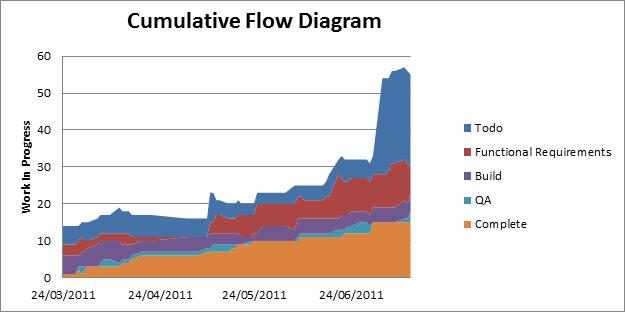We have 2 main queues that I want to talk about today. The Dev Done & the Ready for Release. I’m going to focus on the right side of the board to start with as this is the most valuable side…
What we tend to see over our sprints is a build up towards the end of the sprint. I’m now pondering the benefit of the Ready for Release column. Over time stories/work builds up here and is not release. Part of my limited WIP side comes in to play as well, as soon as I see more than 3/4 cards in play. I’m probably thinking a little bit about the size of the release and the riskiness of the release too.
So this is starting to make me question:
- Is this really a good column to have?
- Why are we completing stuff in test then not releasing it straight away? Maybe the transaction cost to live is too much, if this is the case then this is the problem that needs to be highlighted and gone after.
- Are the stories not valuable to be released independently and maybe the relative value of them is not important?
I’m also questioning the benefit of any queues in the system – like the one between Dev Done & Test. It seems as though this is a smell rather than a solution to flowing work through the system. Queues are just a way to buffer another piece of the system from inconsistent flow of work, most of the work on the board can be controlled by the team. We have cross functional dedicated teams, therefore they should be able to “dev & test” in a single flow.
Some may say that the start of the system is a queue, but in fact this is simply an input buffer to the system/team. This helps to prevent variance within the system so that there is always enough work for the team to work on. Therefore, my opinion is that this is “required”.
Has anybody been able to eradicate these columns?
Maybe all I’m thinking about is Single Piece Flow really…





